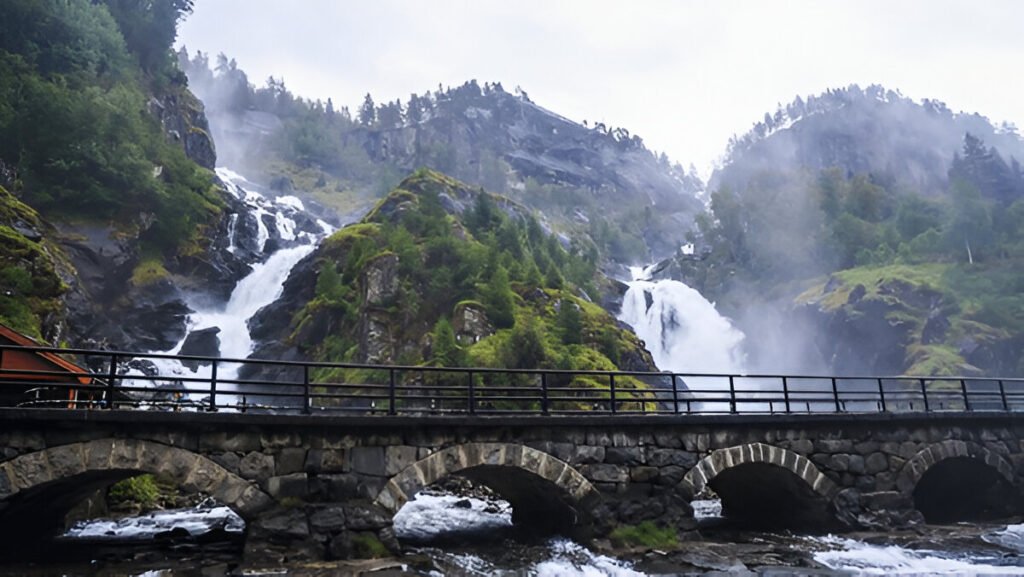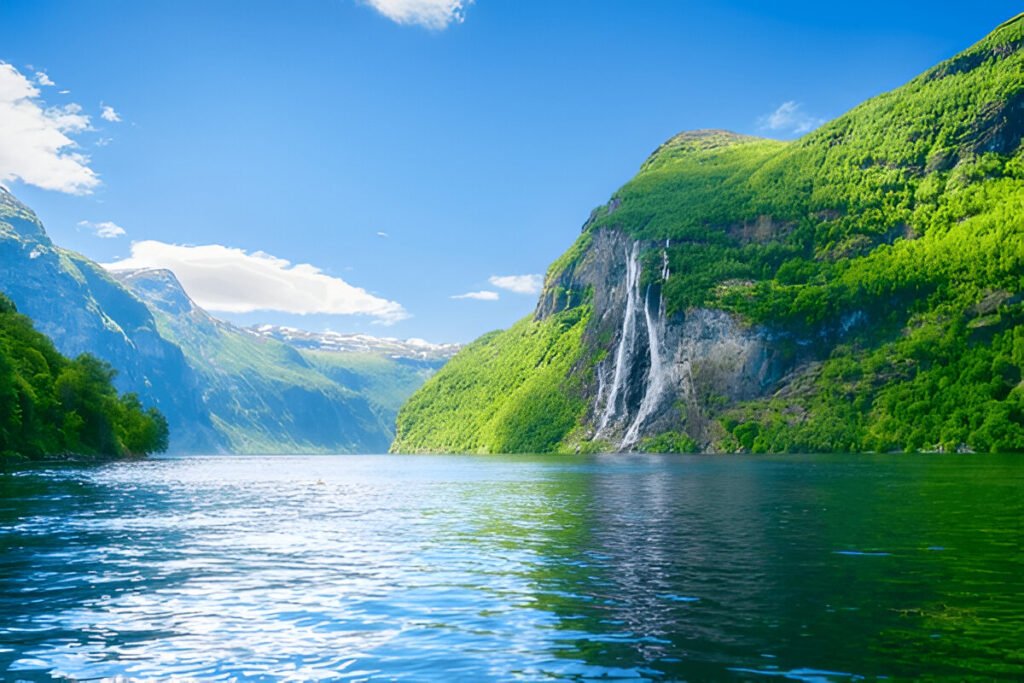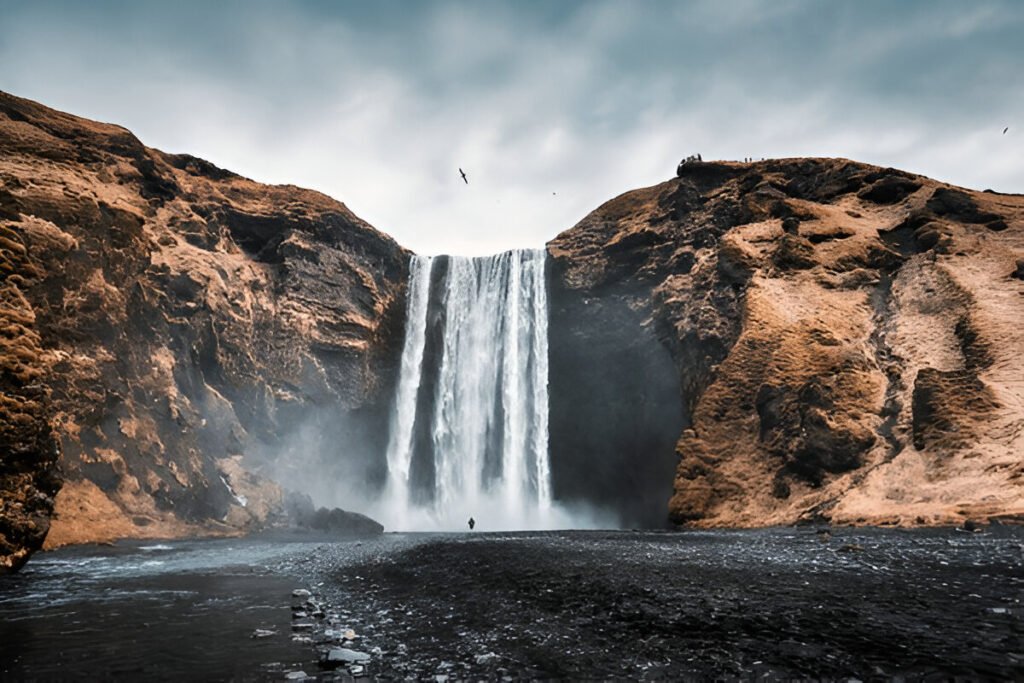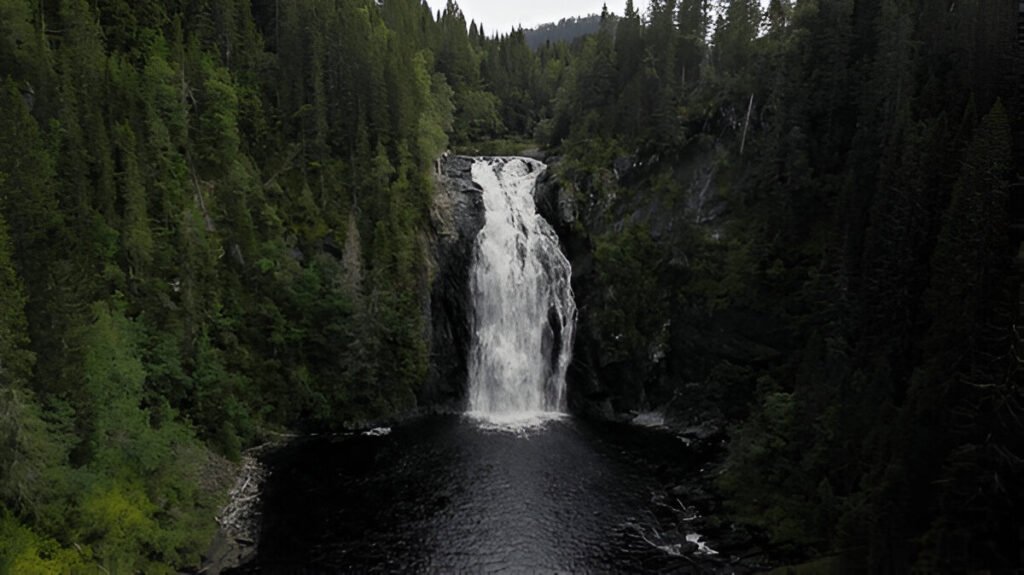Introduction
Scandinavia is a land of extraordinary natural beauty, offering visitors unparalleled experiences in its pristine wilderness. Among its many wonders, waterfalls stand out as symbols of power, serenity, and the harmony of nature. From towering cascades nestled in Norway’s dramatic fjords to Sweden’s serene forested falls and Denmark’s charming streams, the region’s waterfalls captivate adventurers, photographers, and nature enthusiasts alike.
This blog takes you on a 1500-word journey to explore Scandinavia’s most beautiful waterfalls, providing insights into their unique features, locations, and the best times to visit.
Norway: The Kingdom of Fjords and Cascades

Norway, with its rugged terrain and abundant waterways, is a haven for waterfall enthusiasts. Thanks to its steep mountains and glacier-fed rivers, the country boasts some of the world’s most awe-inspiring cascades.
1. Vøringfossen: A Norwegian Icon
Vøringfossen, located in the Måbødalen valley near Eidfjord, is one of Norway’s most iconic waterfalls. With a staggering drop of 182 meters (597 feet), it plunges into a narrow gorge surrounded by towering cliffs. This dramatic setting, combined with easily accessible viewpoints, makes Vøringfossen a favorite among visitors.
Recently, a footbridge was added across the gorge, offering thrilling perspectives of the waterfall. The best time to visit is during spring or early summer when snowmelt ensures a robust flow.
2. Langfoss: A Wide Veil of Beauty
Langfoss, located in Åkrafjord, is unique among waterfalls for its sheer width and bridal veil-like appearance. Cascading 612 meters (2,008 feet) down a steep mountainside, Langfoss has been ranked among the world’s most beautiful waterfalls. Unlike vertical waterfalls, Langfoss flows diagonally, creating a mesmerizing visual effect.
A scenic drive along the E134 highway offers several vantage points to admire this natural marvel, and a short hike provides even closer views.
3. Kjosfossen: A Magical Experience
Kjosfossen, situated along the iconic Flåm Railway, is not just a visual treat but also an experience steeped in folklore. With a 93-meter (305-foot) drop, it creates a powerful mist that enhances its ethereal atmosphere. During the summer, performers dressed as “huldra” (mystical forest spirits) emerge near the falls, adding a touch of Norwegian mythology to the visit.
4. Seven Sisters (De Syv Søstre): A Fjordside Wonder
The Seven Sisters waterfall, located along the UNESCO-listed Geirangerfjord, is a group of seven separate streams cascading down 410 meters (1,350 feet). Their symmetry and proximity make them a stunning sight, particularly when viewed from a boat tour along the fjord.
Sweden: A Land of Gentle Elegance

Sweden’s waterfalls may not be as towering as those in Norway, but they are equally captivating, often nestled within tranquil forests and national parks.
1. Njupeskär: Sweden’s Tallest Waterfall
Njupeskär, at 93 meters (305 feet), holds the title of Sweden’s tallest waterfall. Located in Fulufjället National Park, it offers a perfect blend of raw power and serene surroundings. The well-maintained trail leading to the waterfall is ideal for families and casual hikers.
Spring and summer are the best times to visit, as the surrounding flora adds vibrant hues to the landscape. In winter, the waterfall partially freezes, creating stunning ice formations.
2. Tännforsen: The Largest by Volume
Tännforsen, located near Åre, is Sweden’s largest waterfall by water volume. Its thundering cascade is especially impressive during spring snowmelt. The falls are surrounded by lush greenery and accessible via easy trails, making them a favorite among tourists.
A nearby visitor center provides insights into the region’s history and geology, enhancing the overall experience.
3. Hällingsåfallet: A Hidden Gem
Hällingsåfallet, tucked away in the Jämtland region, offers an intimate encounter with nature. This 42-meter (138-foot) waterfall plunges into a deep canyon, creating dramatic visuals. The surrounding area is rich in biodiversity, making it an excellent spot for birdwatchers and wildlife enthusiasts.
Denmark: Small but Scenic Waterfalls

Denmark, known for its flat terrain, doesn’t have towering waterfalls like its Nordic neighbors. However, its smaller cascades charm visitors with their subtle elegance and unique settings.
1. Møns Klint Waterfalls: A Coastal Delight
The chalk cliffs of Møns Klint are among Denmark’s most dramatic landscapes, and the small waterfalls cascading down these cliffs add to their allure. These falls are fed by natural springs and best viewed during or after rain.
The combination of lush greenery, white cliffs, and the turquoise waters of the Baltic Sea creates a striking visual contrast, making this spot a photographer’s paradise.
2. Eshøj Waterfall: A Hidden Oasis
Located in the Eshøj forest, this small but picturesque waterfall is perfect for those seeking solitude. The gentle cascades are surrounded by moss-covered rocks and dense trees, creating a tranquil ambiance.
Visitors can enjoy a leisurely walk through the forest trails before reaching the falls, making it a delightful day trip.
Seasonal Wonders: The Best Time to Visit

The beauty of Scandinavia’s waterfalls varies with the seasons, offering unique experiences throughout the year:
- Spring (April to June): Snowmelt swells the rivers, making waterfalls the most powerful and dramatic.
- Summer (July to August): With long daylight hours, it’s the ideal time for hiking, exploring, and capturing photographs.
- Autumn (September to October): Fall foliage adds vibrant hues of orange, red, and yellow, creating a picturesque backdrop.
- Winter (November to March): Many waterfalls freeze partially, forming stunning ice sculptures. Frozen cascades like these are a treat for winter adventurers and photographers.
How to Prepare for Your Waterfall Adventure
To make the most of your trip to Scandinavia’s waterfalls, consider the following tips:
- Plan Your Route: Research the accessibility and trails of the waterfalls you wish to visit. Some are remote and require specific transportation arrangements.
- Dress for the Weather: Scandinavia’s weather can be unpredictable. Waterproof clothing and sturdy hiking boots are essential.
- Pack Light: Bring essentials like water, snacks, and a first aid kit, especially if embarking on longer hikes.
- Capture the Moment: Carry a good camera or smartphone to document the stunning landscapes.
- Respect Nature: Stick to marked trails, avoid littering, and respect local wildlife.
Beyond Waterfalls: Exploring Nearby Attractions
Many of Scandinavia’s waterfalls are located near other natural or cultural attractions, allowing visitors to enrich their travel experience:
- Geirangerfjord (Norway): Combine a visit to the Seven Sisters waterfall with a fjord cruise or a hike to scenic viewpoints like Dalsnibba.
- Fulufjället National Park (Sweden): After exploring Njupeskär, visit the nearby “Old Tjikko,” a 9,500-year-old spruce tree, one of the world’s oldest living organisms.
- Møns Klint (Denmark): Extend your trip to include the GeoCenter Møns Klint, an interactive museum showcasing the region’s geological history.
Conclusion
Scandinavia’s waterfalls are more than just scenic wonders—they embody the region’s untamed beauty, rich culture, and harmonious relationship with nature. From the towering, thunderous cascades of Norway to Sweden’s serene falls and Denmark’s understated streams, these natural marvels offer something for everyone.
Whether you’re an avid hiker, a passionate photographer, or someone seeking tranquility, Scandinavia’s waterfalls promise unforgettable memories. So, lace up your boots, grab your camera, and embark on an adventure to chase waterfalls across this enchanting Nordic region.











